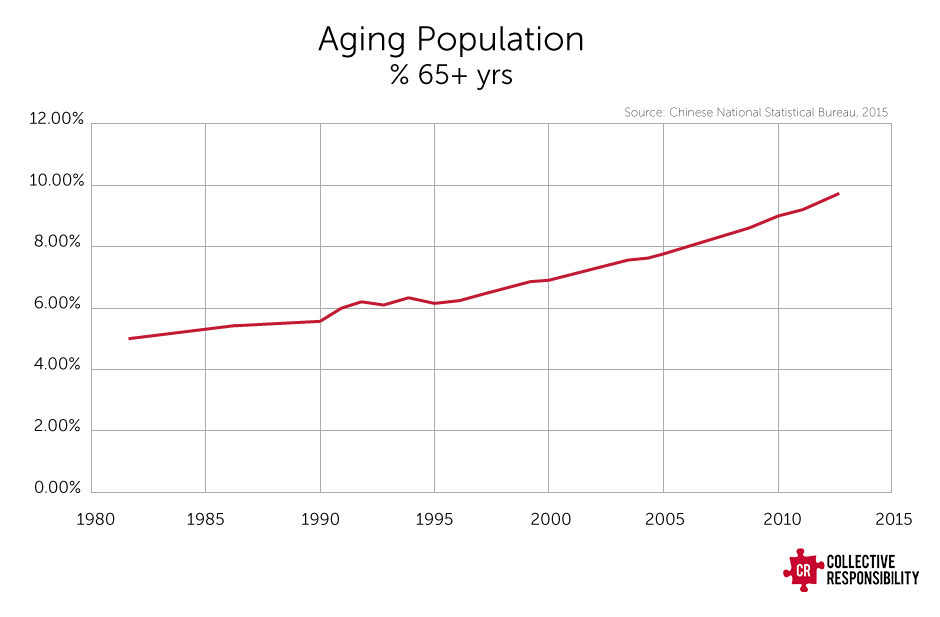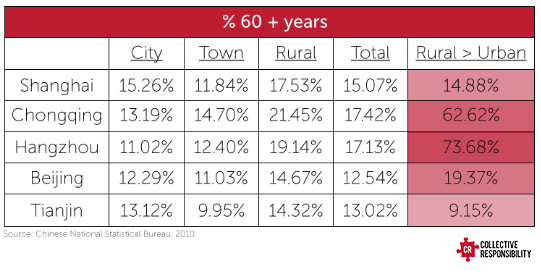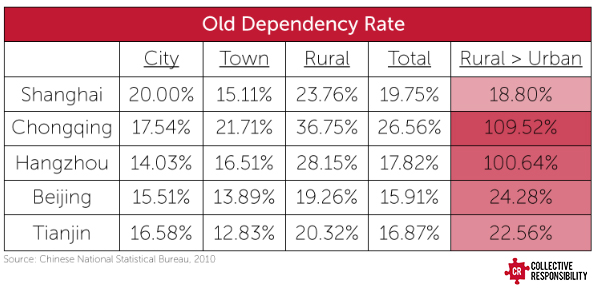China faces an imminent and multifaceted challenge regarding its elderly population. It has the world’s largest aging population of 202 million people over the age of 60, a number that is expected to increase to 300 million by 2023 and 400 million by 2033. We can attribute China’s aging dilemma to a myriad of factors, one of the most prominent being the 1978 One-Child Policy. While limiting each family to a single offspring reduced population growth, it also meant that the single child would eventually be responsible for taking care of up to two children, two parents, and four grandparents. China is just now beginning to feel the full brunt of the aging population as the portion of the population older than 60 years continues to rapidly grow. In turn, the aging population in China causes a strain on the national economy, the public service system, and the traditional Chinese family model.

The Quandary for the Chinese Youth
The aging issue in China is especially interesting to me because I am a direct result of the One-Child Policy. Even though I am now an American citizen, I share the same burden as many of my Chinese counterparts to take care of two parents and four aging grandparents. It creates a sense of responsibility felt by many, but in an ever-globalizing society and with opportunities away from one’s hometown and even abroad, it is a “service” that is becoming harder and harder to provide. As a result, the development of top-of-the-range elderly care services can allow young adults like me to pursue personal goals while feeling confident that families are well-looked-after and well-cared-for, at least in the short term.
The Rural – Urban Divide
While examining 2010 census data about population age structures, I noticed an interesting sub-phenomenon: rural parts of Chinese cities are consistently older than urban areas of those same cities. This holds true for each of the five major cities that I focused on (Shanghai, Beijing, Chongqing, Tianjin, and Hangzhou) as well as around the nation. This phenomenon is in part due to China’s limited internal migration. Because of the strict hukou system, only working adults are able to urbanize. Young people go to the cities to work while older people remain behind in rural settings. As a result, China has become an “empty nest” society, a trend expected to persist as China continues to urbanize at a breakneck pace. Unfortunately, infrastructure for the elderly in rural areas is severely lacking. For instance, there is a limited availability and lack of access to medical care and elderly services in rural villages around the country. As such, it is particularly important that we recognize the needs of the rural areas when considering the elderly situation in China.


The Future of Elderly Care
While the situation can seem bleak, it does present social and business opportunities in both urban and rural areas. Demographic shifts will lead to increasing demands for elderly products and services. The younger generation leaving the home offers space for private enterprise to fulfill the role of providing care for the elderly. Whether the movement of these young people is from rural to urban areas, or from China to countries abroad, effective elderly services can provide a great deal of security and peace of mind. This sentiment can hold particularly true for the younger generation leaving their rural homes to work in urban centers. Thus, it is essential to keep in mind the rural and urban breakdown of the population and their respective needs as we all continue to search for an effective and sustainable solution for the elderly situation in China.
This article was researched and written by Tim Wang, Research Analyst at Collective Responsibility.
N.B. Old Dependency Ratio = Number of Elderly People (60+ Years) / Number of Working Age People (15-59 years)
